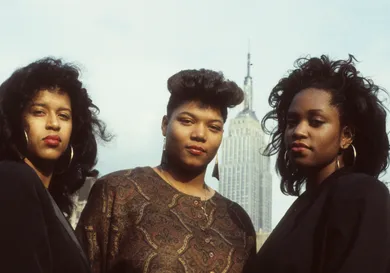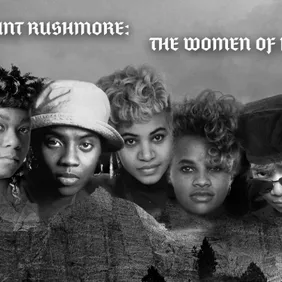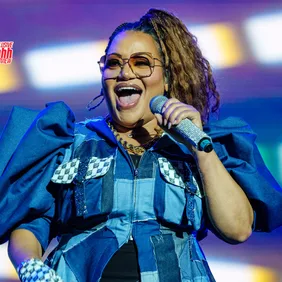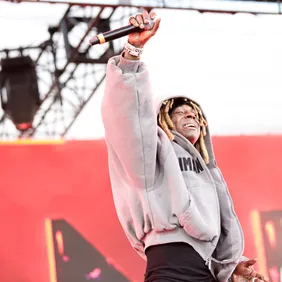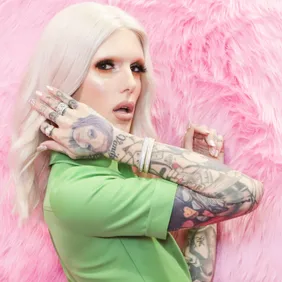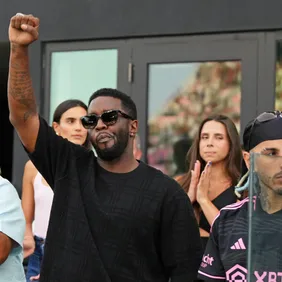Hip-Hop isn't the worldwide phenomenon that it is today without the presence of female artists. Hip-hop emerged in the late 1970s to early 1980s. The echoes of the Black Power movement existed in the expression of the genre's early days. In fact, women were at the frontlines of this culture. From Queen Latifah to MC Lyte, many female rappers played a crucial role in mainstreaming hip-hop. It all started in 1980 when Sylvia Robinson released "Rapper's Delight." It was the first hip-hop song to achieve commercial success and to chart in the Billboard Top 40.
No matter who you are, you need to be prepared if you're going to work in the hip-hop space. It's a deeply competitive space, with artists going from relevancy to unimportance overnight. However, it's not to the same extent that it was in the '80s, according to Grammy-nominated rapper Monie Love: "Today you need to have thick skin, but back in the 80s, you need to be a rhino, honey, because for one, you could be as good as any man and you still wasn't getting the level of respect that you deserved as a woman on the mic."
Women In Hip-Hop Were Doubted In The '80s & '90s

Throughout the '80s, women continued to struggle with notions surrounding sexism in the hip-hop industry. However, pinpoint moments began to change the conversation surrounding women in hip-hop. One of those moments came in 1989 with "Ladies First," a collaborative track between Love and Queen Latifah. You also had Yo-Yo's "You Can't Play With My Yo-Yo" with fellow California rapper Ice Cube. With the two bouncing off each other amid a West Coast-style beat, the track was another piece of outspoken female empowerment.
Female rap group Salt-n-Pepa arguably played the most significant role in getting the music world to take female hip-hop seriously. The group released their first studio album in 1986 with Hot, Cool & Vicious. Even the most rudimentary of hip-hop fans have likely heard "Push It." The single would go Platinum and reach No. 19 on the Billboard charts. The group made it their mission to prove that sensuality and hip-hop were not mutually exclusive. They encouraged other female MCs to express their fullest selves rather than fall into the mold of the hip-hop industry.
Female Artists Pushed Against Stereotypes Surrounding Image
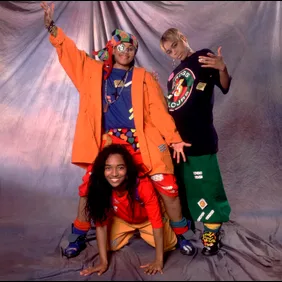
However, hip-hop began to edge into the suit-and-tie culture by the early '90s. The corporatization of the genre emphasized meeting the bottom dollar rather than curating genuine artistic expression. Roxanne Shante expanded on this, stating, "I say that that shift started in the early '90s when they took the female rapper and didn't make her the more prominent female figure in hip-hop. Instead, they took the video vixen and made her the more prominent figure in hip-hop, so people were looking for her rather than looking for a lyricist." With female artists increasingly being treated as objects of sexuality, a counterculture was forming against this trend by the late '90s to early '00s.
Missy Elliott spearheaded that counterculture. By the early '00s, hip-hop was well on its way to becoming the biggest genre in the United States. Rap songs were being blasted in the malls of American suburbs. Elliott's larger-than-life performances proved that a female MC could be successful without choosing to sexualize her image. In addition, her carefree and blissful artistic expression was a breath of fresh air in a genre covered in violence and aggression. Of course, Elliott wasn't the only beacon of individuality in the female hip-hop space. You also had the likes of Lauryn Hill, Aaliyah, and Mary J Blige.
Bold Female Personalities Are Blowing Up Existing Norms
Building on the foundations of female expression from the '80s to the early '00s, female hip-hop is becoming increasingly synonymous with hip-hop. Nicki Minaj walks a tightrope between existential heartbreak and a bubbly demeanor. The Bronx-born Cardi B's bombastic personality is tailor-made for reality TV, rapping amidst expensive beats that resemble Meek Mill. Megan Thee Stallion throws up a series of alter-egos ranging from nihilistic to self-deprecating, attacking those who only acknowledge her for her sexual image. These wide ranges of mainstream female hip-hop personalities prove that the existing stereotypes surrounding identity in the industry are rotting away with time.
The stark reality is that the genre's treatment of women isn't mutually exclusive to hip-hop. Much like the WNBA, women in hip-hop are traditionally paid less and receive less attention than their male peers. However, the vacuum in which femininity can be expressed in hip-hop is evaporating. From the influences of Missy Elliott and Lauryn Hill to modern-day artists such as Little Simz or Nicki Minaj, the story of female empowerment is an ongoing one that started in the late 1970s.
